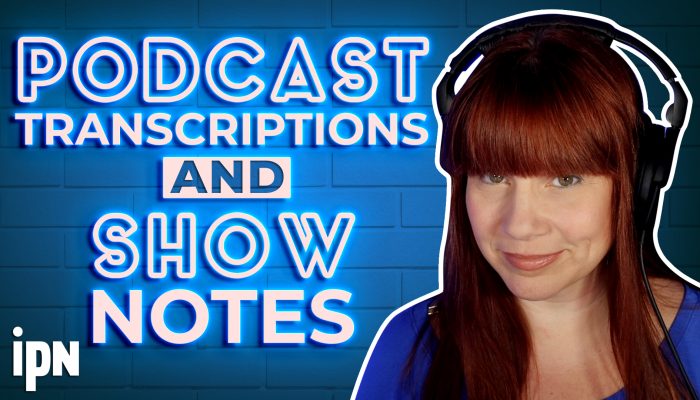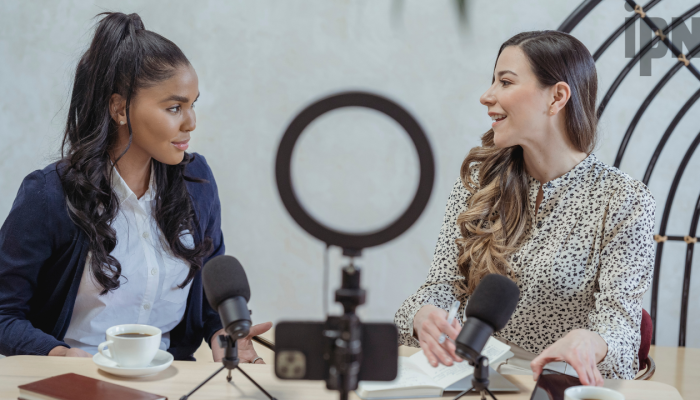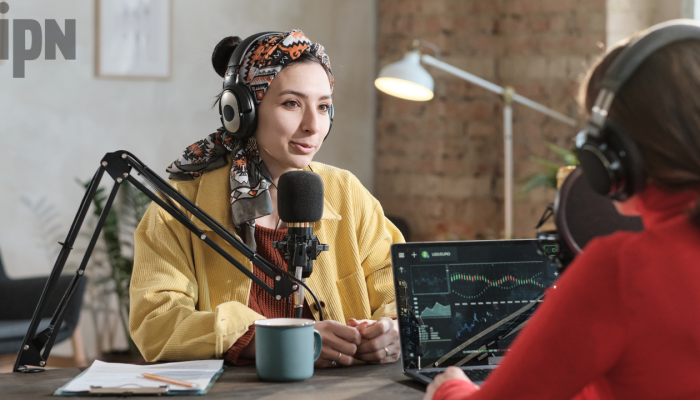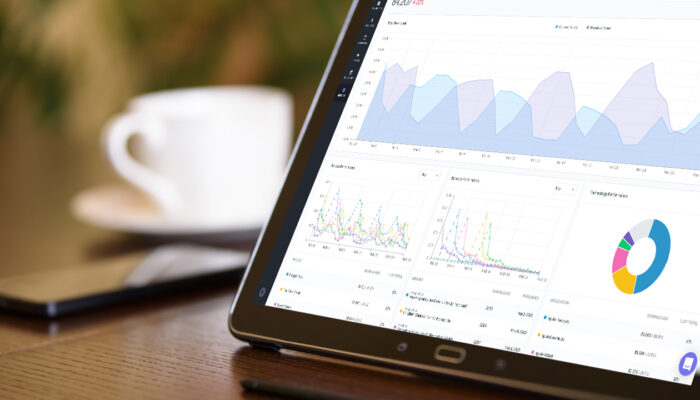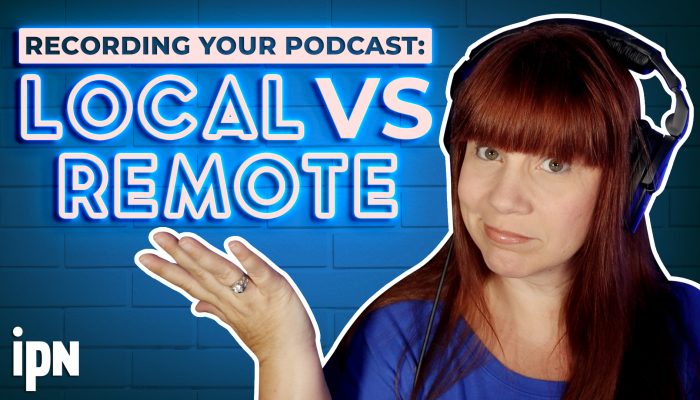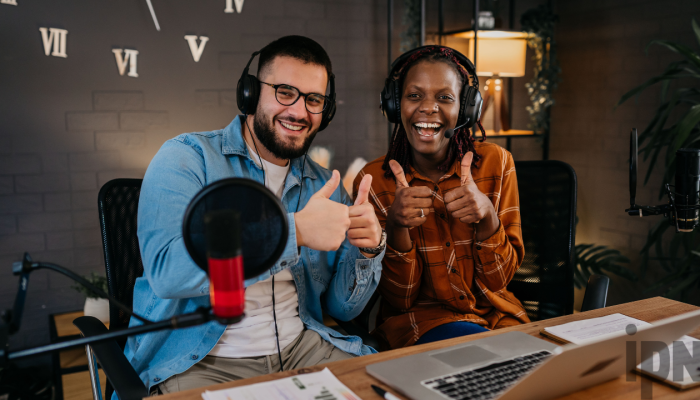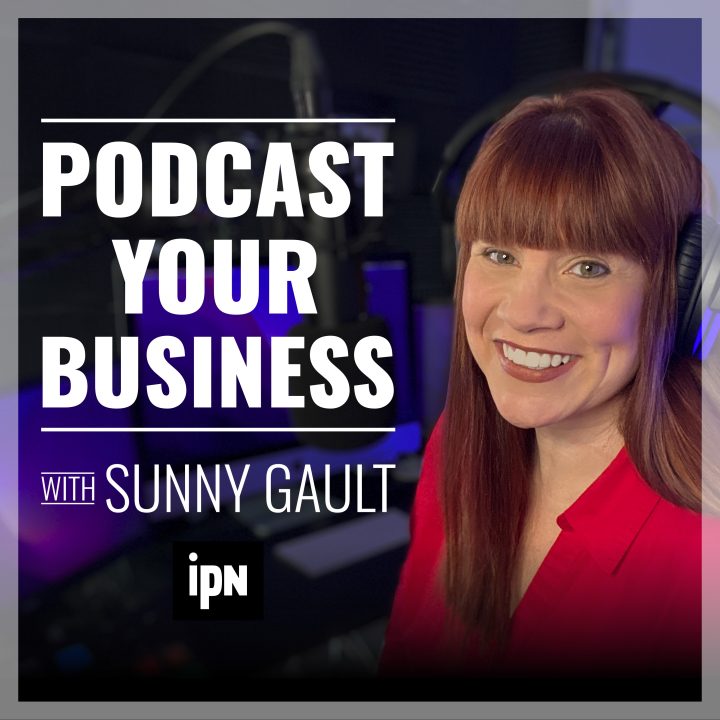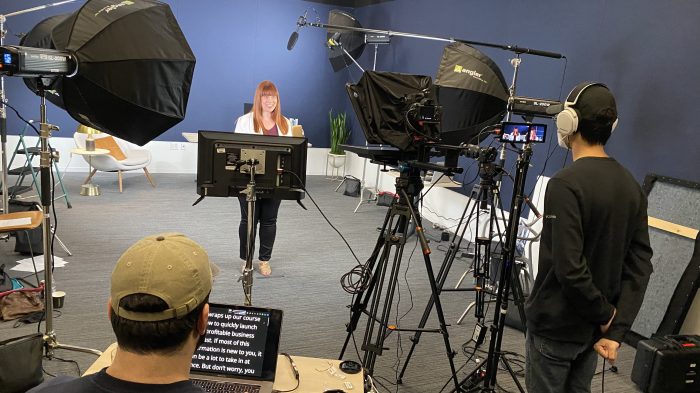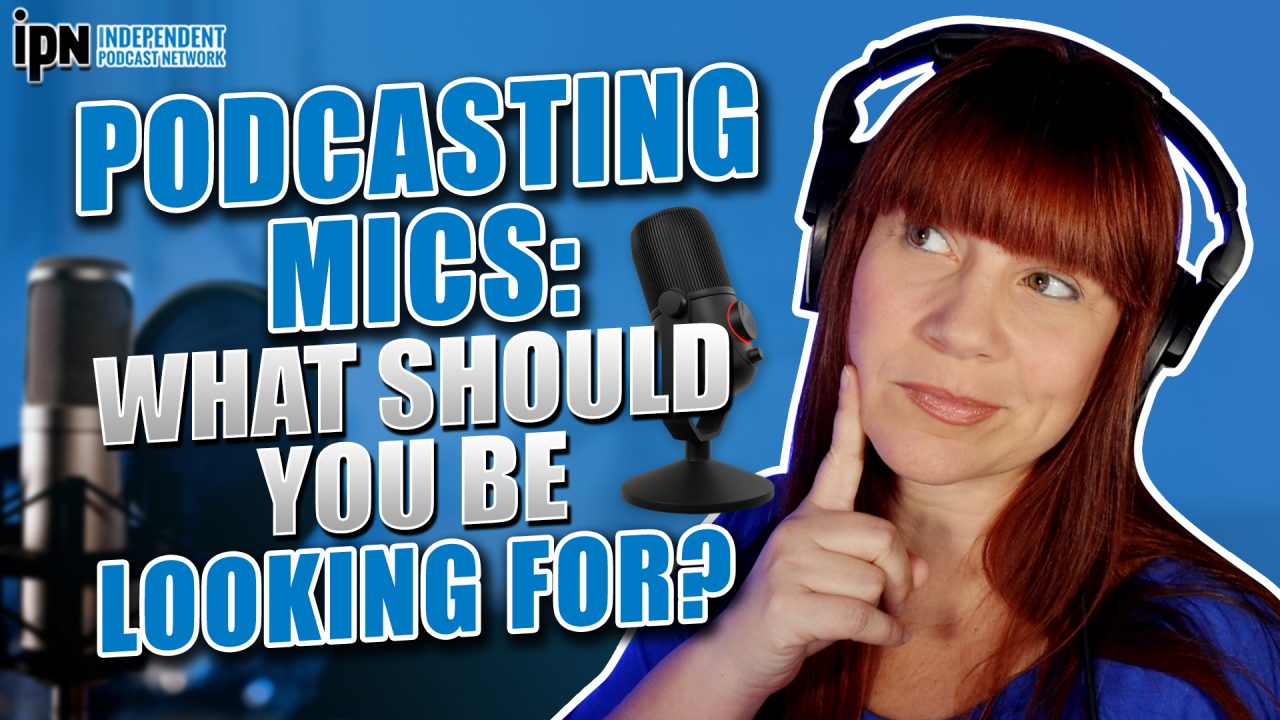
what factors should you consider before you buy?
The most important piece of equipment you need for your podcast is a microphone. But don’t stress out. There are tons of microphones to choose from- in fact, it’s hard to weed through all the options to find the one that will work best for you. So, that’s what we’re going to focus on today. Not only will we talk about microphones, but we’re going to use different microphones in today’s episode, so you can hear the difference.
We’ll discuss the following factors to help you make the best decision…
- How you’ll be recording your podcast (remotely, on location, in-studio)
- Your options for connecting your mic so you can record
- The difference between the types of microphones: condenser and dynamic
- BONUS! We’ll do a test with several microphones so you can hear the quality
find the best mic for your podcast!
We’re taking the guesswork out of podcast microphone shopping! Learn exactly what to look for… plus, we’ve got direct links to purchase the microphones featured in our mic test!

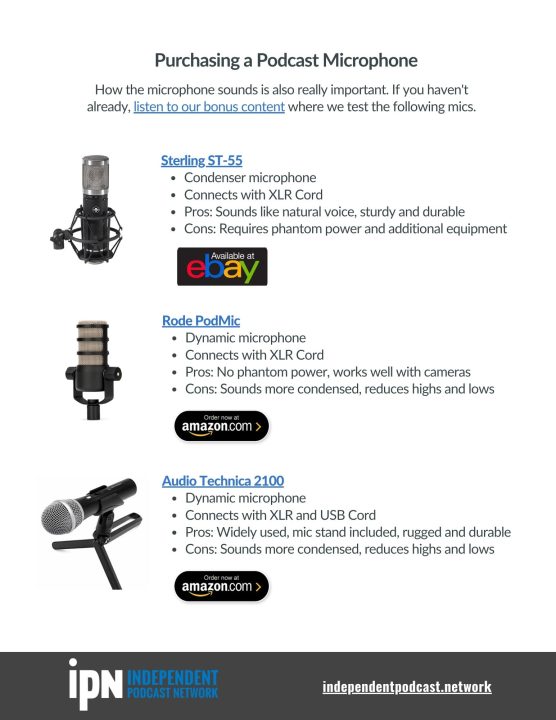
Episode Transcript
0:00
Probably the most important piece of equipment you need for your podcast is a microphone. But don’t stress out there are tons of microphones to choose from. In fact, it’s hard to weed through all of the options to find the one that will work best for you. So that’s what we’re gonna focus on today. Not only will we talk about microphones, but we’re going to use different microphones so you can hear the difference. Take it away, Mister radio man! Podcast Your Business.
0:38
Hey, everybody, and welcome back to Podcast Your Business. I’m Sunny Gault. I’m a podcast coach and mentor and I have been podcasting for the last 17 plus years. I’m also the founder and CEO of a company called Independent Podcast Network. And you can check us out at https://independentpodcast.network. We’ve got a ton of free content on our website, including this podcast. I have free courses on how to podcast free handouts. We have a weekly blog post that goes out every week. And I’m here today to help you create amazing podcasts for your business. And we do this by mastering the five P’s of podcasting. So the five P’s of podcasting stand for prep, plan, produce, promote, and profit. So this is something that I talk about in my online courses. It’s my guide for brand new people who want a podcast and if you master these five Ps, you are going to be well on your way to having a successful podcast. So when each of these episodes we break down to different P, you know, a different topic that’s part of one of these Ps. So Mr. radio man, what are we talking about today?
1:50
Produce. That’s right, because we’re talking about podcasts and microphones. And that is all part of the production process. So if you are serious about podcasting, then you need to get serious about your equipment. And that includes your podcast microphone. Now, thankfully, nowadays, you do not have to break the bank in order to get a good podcast mic. In fact, if you have been listening to podcast your business from the beginning, I did an episode is like the first few episodes I did one of those is about starting your podcast. And the fact that you can do that for $250 or less. And I say in that episode, if you are going to invest money into equipment, which I don’t recommend you do a lot of investing in equipment in the very beginning. But if you’re going to invest any money, you should invest it in your podcast microphone. So here’s what we’re going to be discussing. Okay. We’re going to talk about the following factors to help you make a more educated decision on what podcast mic is best for you. So we’ll be talking about how you’re planning to record your podcast. Are you doing this remotely? Are you doing it on location? Are you doing this in some big fancy studio, right? We’re also going to talk about how to connect the microphone, how is it going to actually connect to your computer, because that depends on what kind of mic you get. And we’ll talk about the difference between the types of microphones, there’s basically two, you’ve probably heard these terms before, there’s condenser microphones, and dynamic microphones. And then guys, I’ve got some amazing bonus content for you today. I don’t usually do bonus content, in addition to the episode, but I always do the free handouts. And today you get both. So right after this episode and the RSS feed for this podcast, you are going to see another entry called bonus. And we are actually going to go through six different microphones that I have on hand here. I’m going to tell you about each of them. I’m gonna tell you why I like each of them. And then in the handout for today, not only you’re gonna get all the notes that we talked about in this episode, but you will also get links if you’re interested in purchasing any of the mics that we talked about in that bonus content. So a ton of stuff to talk about today. And we’re going to dive into it right after this quick break.
4:11
When you are researching which podcasting microphone to buy, there are a few factors that you have to consider. That’s what we’re going to talk about right now. So the first of those is how are you going to be recording, because you may need different microphones for different setups that you have, you may not always be in the same place you may need to travel you may need to get together with other podcasters. And this is all related back to your microphone and how your microphone operates. So let’s go through some of the common ones. I want to talk first about recording remotely. What do I mean by that? Well, this is how the bulk of podcasters podcast nowadays it was a little bit different when I started podcasting, but nowadays most people are either recording by themselves in their own little home studio whatever that looks like, for example, that’s what I’m doing right now. They are also recording remotely with their guests. So their guest is not in the same place, but they are using some sort of online recording system. I know a lot of you use Zoom, shame, shame, shame. But that’s one example. But there are recording platforms out there that allow you to use your browser, make it specific for podcasting, there’s several out there, I’ve talked about them before. And if you were using those types of systems, that actually gives you the most flexibility when it comes to your microphone, because it’s usually only you, right, you might have a co host that’s in the same room. But usually, it’s a single host. And then anyone that’s joining the conversation is joining from a completely different location, right, so it’s going through their browser, and then you’re recording it that way. And with that, you really don’t have to worry too much about what type of microphone you’re using. Now, you do need a microphone, okay, I always recommend people use an external microphone, if you’re the host of a podcast, I mean, it’s nice for your guests to use it too. And we have seen since the pandemic, a lot more people have some sort of headset or something because a lot of people had to remote into work, right. And they had to do all their meetings remotely. And so it’s, it’s easier now than ever, to have good quality, you know, audio for your podcast, it really is. And so just know, when you’re doing it remotely, that’s actually the easiest way to do it, it gives you the most flexibility, you don’t have to worry about other podcasters in the room, you know, you don’t have to worry about it being really noisy usually, right, usually, you can kind of close the door and make sure the traffic isn’t bad outside. So that’s one way.
6:46
The next way is on location. And when you are on location, meaning you’re outside of your natural recording space, whatever that is. So recently, I went to a Expo in Las Vegas called nab the National Association of Broadcasters, and we had to broadcast live from the convention floor. It was super duper noisy, okay. And we had to change the equipment, the equipment that I will use in the studio is very, very different than what I would use on a floor where everyone is talking and people are walking by. And you’ve got people making announcements over a loudspeaker, right? And so you have to consider your equipment. Now, there, you know, things have gotten very, very simple. If you want them to be I have a microphone, which I’m going to tell you about in the bonus content that I literally just plug into my iPhone, it is an amazing microphone, it does have a cord, it plugs directly into my iPhone. And it sounds amazing. That’s what I used on the convention floor. Now I’ve also done remote recordings. When I say that I mean more on location. Okay, so I’m not talking about going through the computer. Now I’m talking about being on location. So I have done recordings through a DSLR camera. Okay. And then you have to know the different wires to use. It gets a little bit more complicated when you do that. But I had to change microphones for that. And the reason I had to do that is because of the way the microphone gets powered up. Okay, I’m going to tell you a little bit more about some of the specifics in just a little bit. Okay, but that’s an example of being on location. So does that fit what you’re trying to do? And the other one is a more in studio approach. So it may not be a big fancy studio, I mentioned that earlier, because they’re probably going to have their own mic setup for that, and you just run out the studio. But if you’re trying to create a studio, I did this when I first started my parenting podcast, every weekend, I would go to a location, I would bring all of my equipment, which was really heavy. I had five or six podcasting mics, I would set up in a room. And it’s like a roundtable discussion, right? So if you have that type of setup, where you have microphones that are only, let’s say, two or three feet apart, then that’s something you have to consider as well. This runs into something called Audio bleed. Okay, I know it’s kind of a kind of a gross term, like who wants to think about audio bleeding, but that is the technical term for it. So if you have all these microphones in a room, not only is your voice going to pick up in the microphone that’s right in front of you. But inevitably, it might pick up in the podcast mic to your right or to your left, that’s called Audio bleed. And it doesn’t happen when you’re in separate rooms, but when you get multiple microphones in the same room, it can happen. So then you have to think about things such as I’m gonna throw out some terms here, just kind of let it resonate. You know, I know you guys probably aren’t super techy, and neither am I honestly, but I want you guys to hear these terms. So there’s something called on directional mics, okay. And omni directional mics pick up sound in all directions, right? So picture your microphone and picture someone talking to the front of it to the side of it to the back of it. That’s an example of omni directional, it’s going to pick up sound from all angles of the microphone, then you have something, here’s another buzzword cardioid. Okay. And cardioid mics pick up sound more strongly in the front of the mic, and then it kind of tapers off to the sides. And so that’s actually better, right? If you’re in a room full of podcast mics, because you really just want to get the voice of the person directly in front. You may have also seen, like, if you see film, like film crews out on location, and you see those boom mics that they have, and they’re holding a microphone that’s tipped down. So it can pick up the actor’s voice that is called a shotgun or a directional mic. And that’s even more exaggerated than the cardioid. So it really is, is very, like laser focused on the direction the audio is coming from. And that’s, that can be really good, especially again, if you’re in a situation where you’ve got multiple mics in the same room. So that’s number one, consider how you’re going to be recording your podcast, are you doing it remotely? Are you doing it on location? Are you doing it in some sort of studio environment where you have a lot of microphones.
11:27
Next, let’s talk about how you’re going to connect your microphone. There are basically two ways kind of three nowadays because people are using their cell phone. But there are basically two main ways that you can connect your microphone to whatever you’re trying to connect it to. The first is called USB. Now you guys are probably familiar with that, because a lot of things take USB, it’s a plug and play option, it is meant to be super easy. So you literally plug in your mic, usually directly to your computer, and then it shows up in whatever recording platform you’re using. And then you just select the mic and then you talk into the mic and boom, there you go. Most microphones nowadays are not going to require you to download any additional software, which is really nice, because years ago, it did. But the USB is really more of a plug and play. Just plug it into your computer and go and I have found that this is fantastic for travel, or when you are on some sort of location because you’re just able to keep things super simple. Now the other option is something called XLR, don’t ask me what it stands for. I have no idea someone’s gonna tell me I know. But XLR cords, it’s more like an equipment cord. So if anyone has ever been a musician before, it’s the end that has like the three prongs. Okay, if you’ve seen that before. Now that’s not going to plug directly into your computer. So you have to have additional equipment, some sort of audio interface or perhaps a mixer in order to make that microphone work. And for the microphone I’m using right now it has an XLR cord, and that XLR cord goes into my mixer so what I’m using is the Rodcaster 2, Rodcaster Pro 2, I think it’s called. And so then the Rodcaster Pro 2 is going into my computer so I have a separate device for this microphone because this is the microphone that I prefer to use when I’m in studio. Okay, so those are your main two options. The third option that was like ah, you kind of have a third option now and that is when microphones can plug directly into your cell phone which, at least in the case of an iPhone would be a lightning cord. So it’s a combination so we’re seeing more and more of that but USB and XLR are still the main two.
13:55
Okay. Now let’s talk about the types of microphones you have two main types of microphones, condenser and dynamic. So let’s explore this a little bit condenser microphones. This is gets a little techie okay, but bear with me. They rely on an electrically charged diaphragm to generate an electrical current. Okay, what does that mean? Well, you know, you have a diaphragm in your body, right? So it makes sense that in order to produce sound properly, your equipment would have a diaphragm as well. So let’s talk about the the pros and cons of this. Okay, some of the pros by the way, condenser microphones are my favorite. They can be a pain in the butt and we’re going to dive into that right now as to why, but I usually try to use a condenser microphone. The microphone I’m using now is a condenser microphone. And the reason I like it is I just feel like it sounds more like my actual voice just sounds more true to what I think my voice sounds like. Here are some other pros Okay, so you have increase sensitivity, which results in that clearer sound with more detail. That’s exactly what I was just talking about. That’s just the official way to say it. You also have a wide frequency response. And that captures both the highs and the lows. So when I say that my voice, I think my voice sounds better. This is specifically referring to females, females usually have more highs and lows and their voice. And so I have found that condenser mics worked much better for females. Okay, that’s my own personal opinion. And that kind of is the reason behind it, what I just said. Now, let’s talk about some of the cons. Because these could be a deal breaker for you. Condenser microphones have a tendency to pick up more noise in the room. So ideally, you’re going to have some sort of way to soundproof the room that you’re in, for example, the room I’m recording, and now has those little tiles up on the wall to make it so I don’t hear a lot of echo in this room, otherwise, the echo would be insane, okay, and you have to pay attention to other noise. So if there’s something going on in the corner, you’re probably going to hear it with a condenser microphone, perhaps not so much with a dynamic microphone. So you have to keep that, you know, into consideration as you’re choosing your mic. Also, condenser microphones require something called phantom power. Remember those words phantom power, that sounds really fancy, but all it really is, is an external power source, which means the microphone can not operate on its own, it is relying on some other power source in order for it to start up and turn on so to speak. That’s important, depending on your setup, what we talked about earlier, okay. Also condenser microphones can be more expensive, although I have found that the cost is coming down a little bit, especially with models that are specific for in studio use.
17:01
Okay. All right. So let’s switch gears here. We talked about condenser. Now let’s talk about dynamic. So dynamic uses a magnetic coil to produce electricity, which is why you do not need phantom power, what we just talked about, okay? Those microphones dynamic microphones are more common. They are easier to use, they’re, you know, they’re involved in a lot of the plug and play mics with the USBs. Usually, it’s just easier for people that don’t have a technical background to use a lot of the handheld mics that you see, like when you see the singers like oh, okay, that is a dynamic microphone, the way they’re holding it and everything. It’s usually omni directional, so it’s picking up audio from all levels. And it’s dynamic, it’s usually easier to use, and they’re usually more durable, too, I have found. Alright, let’s go into more pros and cons. So more pros here, less susceptible to feedback and noise. They do not require phantom power. I already said that they are more rugged and durable than condenser microphones. And they’re usually less expensive than condenser mics. Okay. Some of the cons, reduce sensitivity results and poor overall sound quality. So this is what I was talking about when I said, this is why I typically use condenser mics, I just feel like it sounds more like my voice doesn’t have these, I’m just going to call them filters. I don’t know if that’s the appropriate term. But it’s not as sensitive. So I feel like it doesn’t sound my voice doesn’t sound the same way it sounds when I just hear it in my ear, right when I’m just talking to people. So that’s a con. It also has narrower frequency responses, meaning you miss out on those highs and lows, right? That makes sense. And it can be difficult to position correctly. Alright, so whereas you know, with a condenser mic that it’s usually coming from the front, right, that’s the part you need to speak into. It’s a little bit different, right? It covers all sides, usually with a dynamic mic. And so that’s why they say it could be difficult to position. So those are the three factors that you have to consider when you are purchasing a microphone for your podcast one more time, how are you going to be recording? How are you going to connect your microphone to your setup? And then what type of microphone do you need? That’s when we got into condenser and dynamic and the pros and cons of each. So now you may be thinking Sunny, but what about how the microphone sounds? Because that’s the big thing, right? You want to sound amazing with your podcast. I’ve thought of that as well. More information on the other side of this break.
19:34
I have tested out a lot of microphones over the years some I decided to purchase sometimes I was like a Yeah, we gotta return this one. So I have my list of microphones that I have here in my studio that I use all the time. So I thought what would be helpful is to do a mic test with these microphones and to show you guys firsthand what the microphones sound like how I use them and you know some of the pros and cons that I found with each. But it would make for a really long episode if I included that in this episode for Podcast Your Business. So guess what, you guys get a free bonus content episode. So after you’re done listening to this, click the episode below. And that is your bonus content. So we’re going to do a whole little bit with these microphones. And then it’s nice to because if you want to send it to someone else, you know, they don’t have to hear all the background behind the microphone, you can just you know, hear what I have to say about the actual mic and get the test. So you can just send them the link to the bonus content. That’s right after this. And in addition today, of course, I’m gonna give you a free handout. So if you weren’t taking notes, that’s all good. I talked about a lot of stuff in today’s episode. And I’m going to include all of that in a guide, a podcasting microphone guide that is available for free on the Independent Podcast Network website. So I’ve got the link in the description below.
20:53
Guys, we have made a ton of changes to our website at https://independentpodcast.network. As I mentioned earlier, there is so much free content on there. It’s a resource I wish I had when I was starting my podcast, and now it’s available to you guys. So please check out all of that free content. And then if you’re ready to monetize your show, we would love to help you out with that. Check it out at https://independentpodcast.network. Until next week, remember…you should start a podcast!


